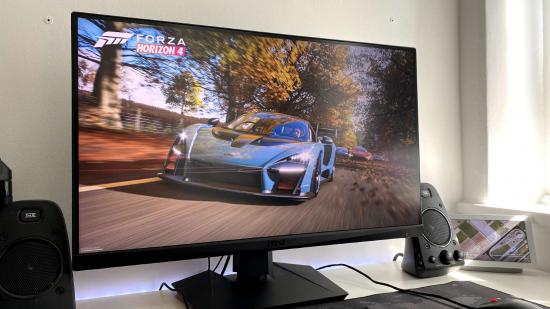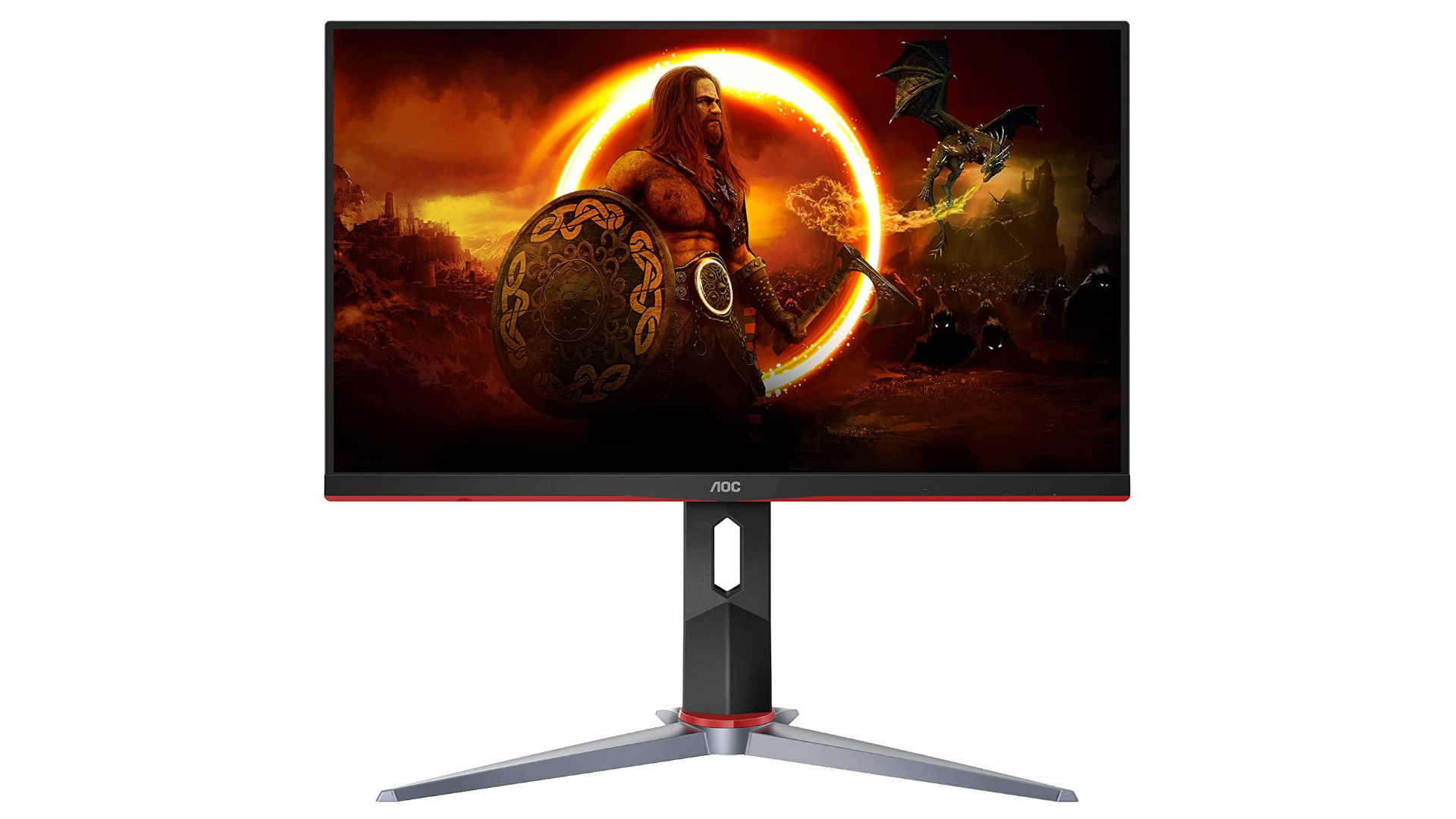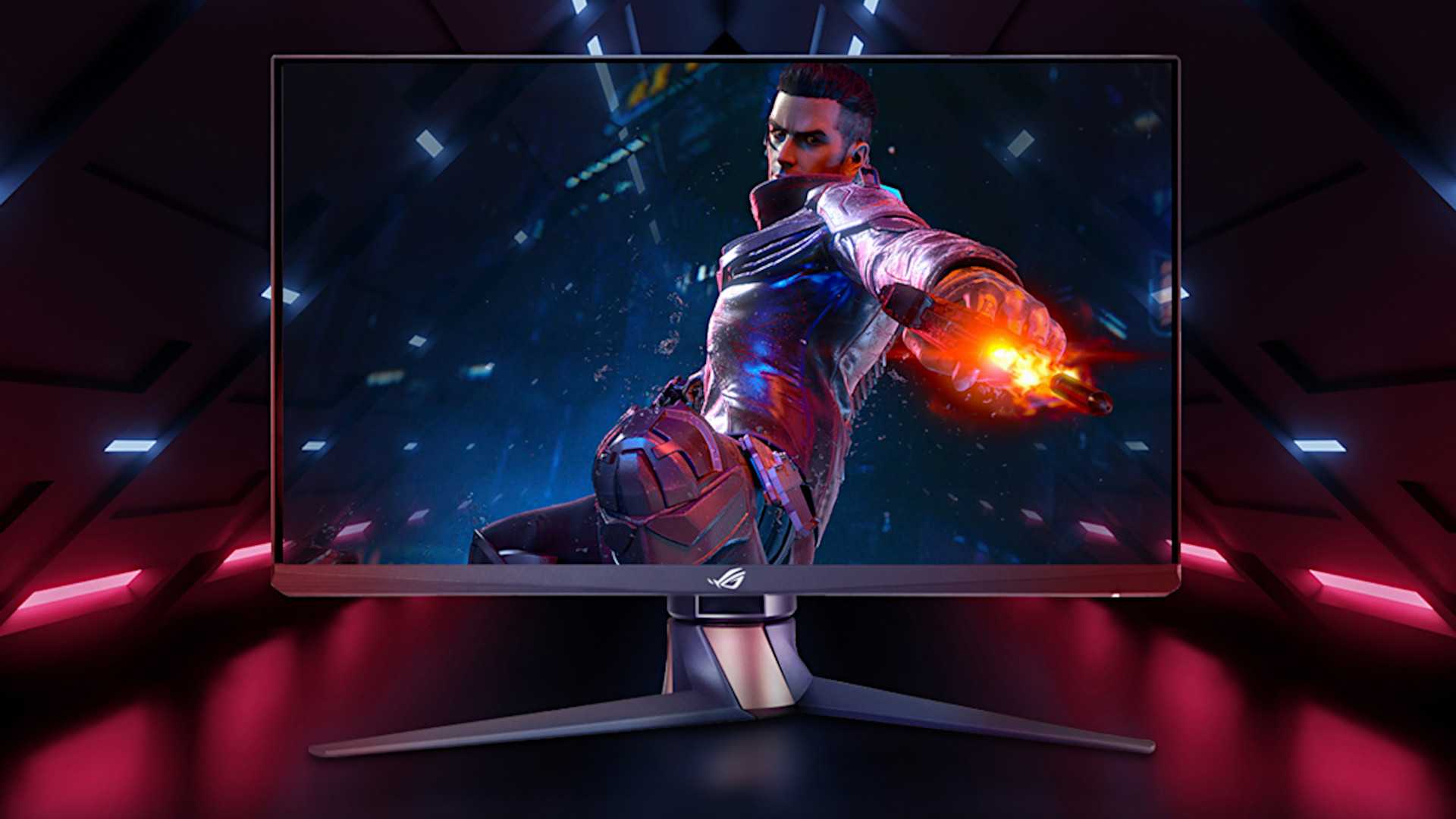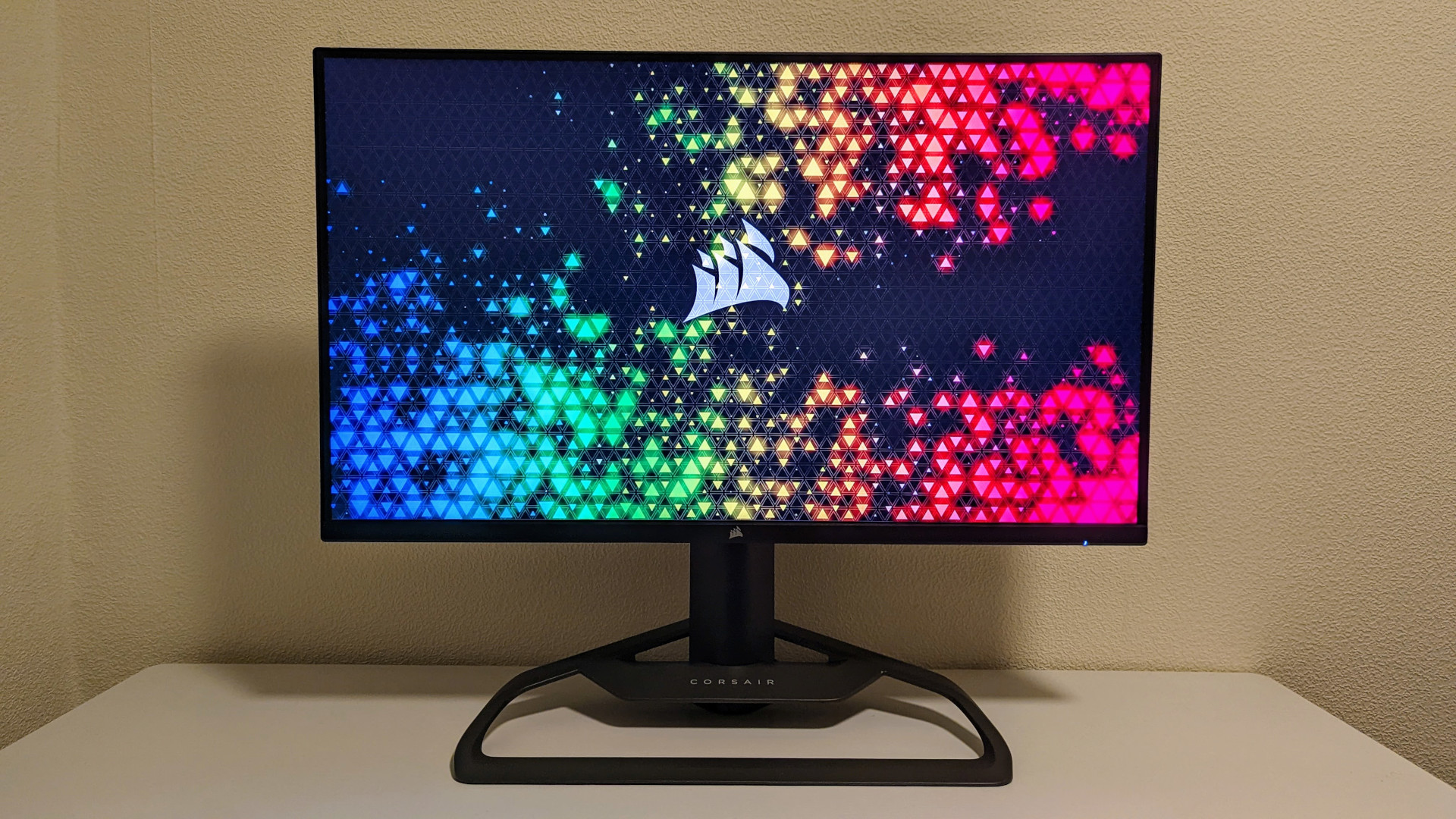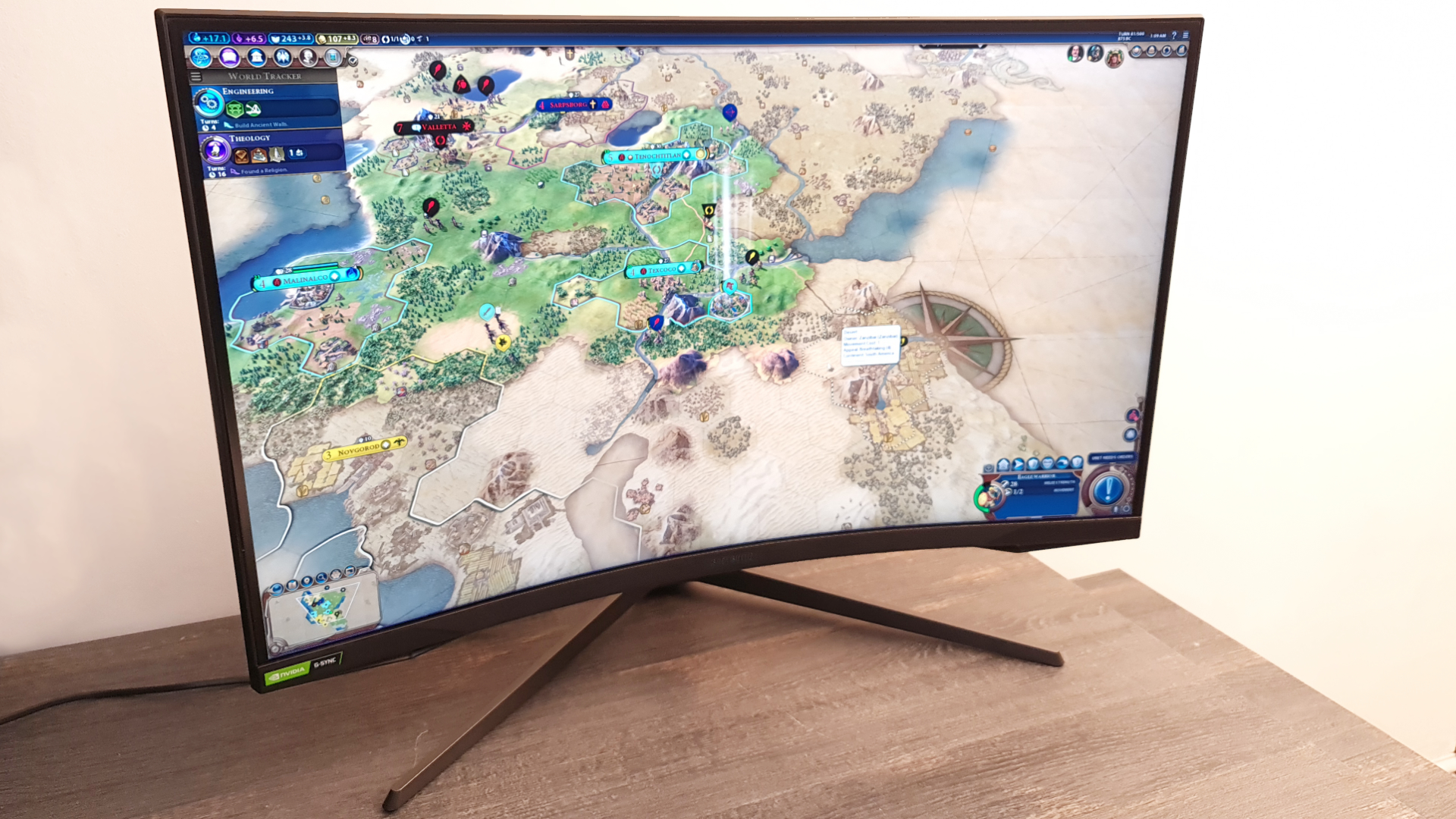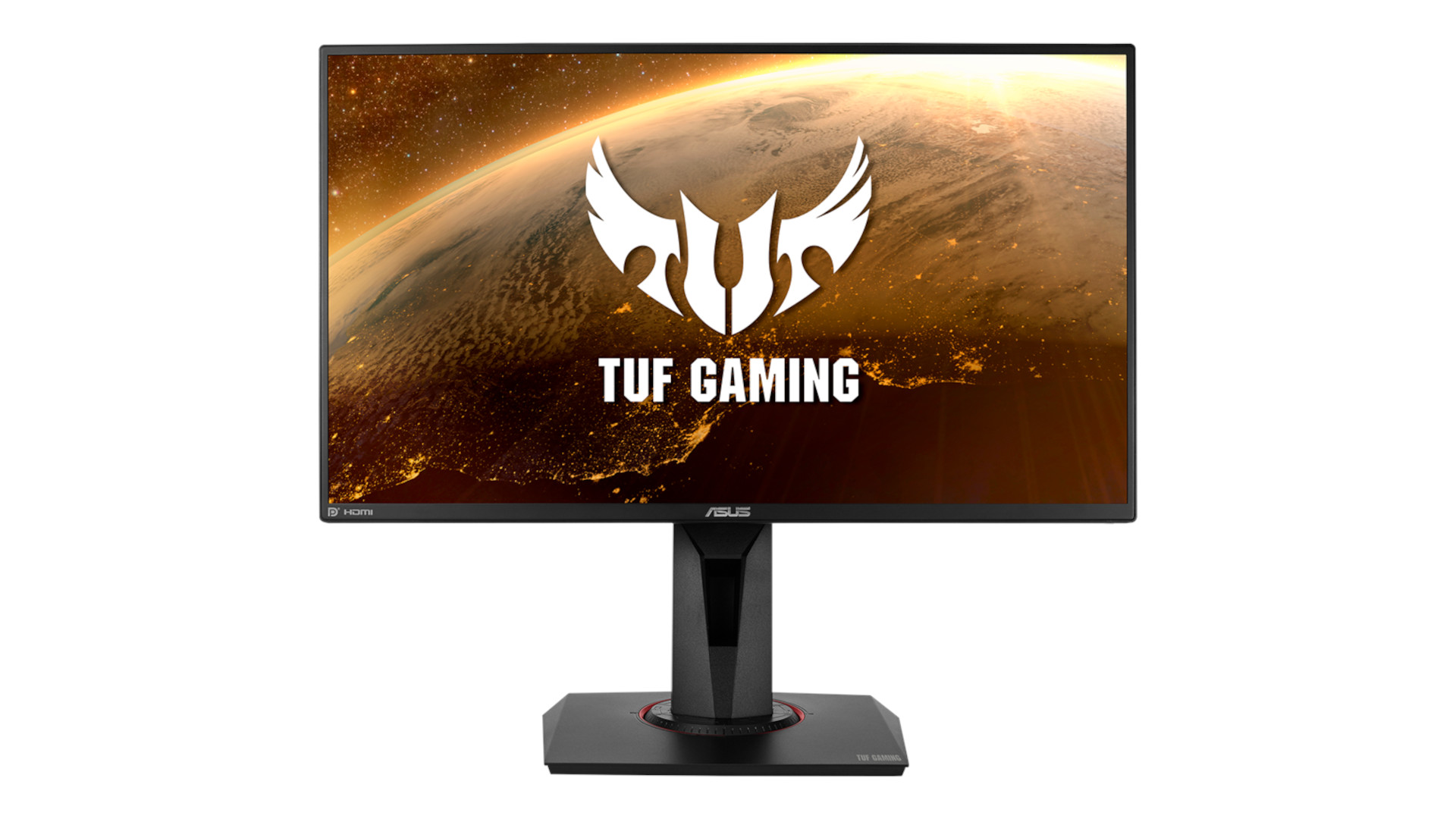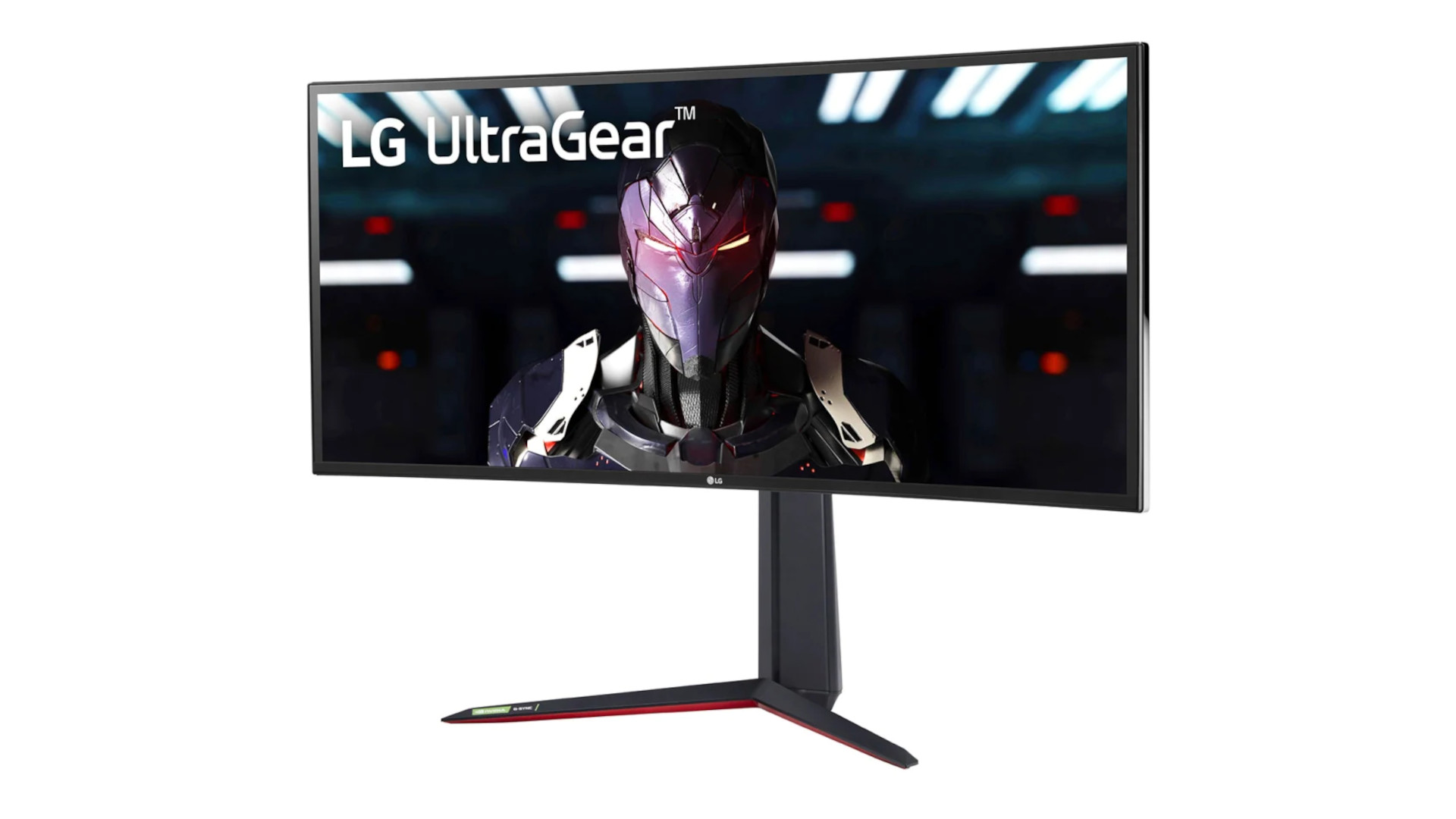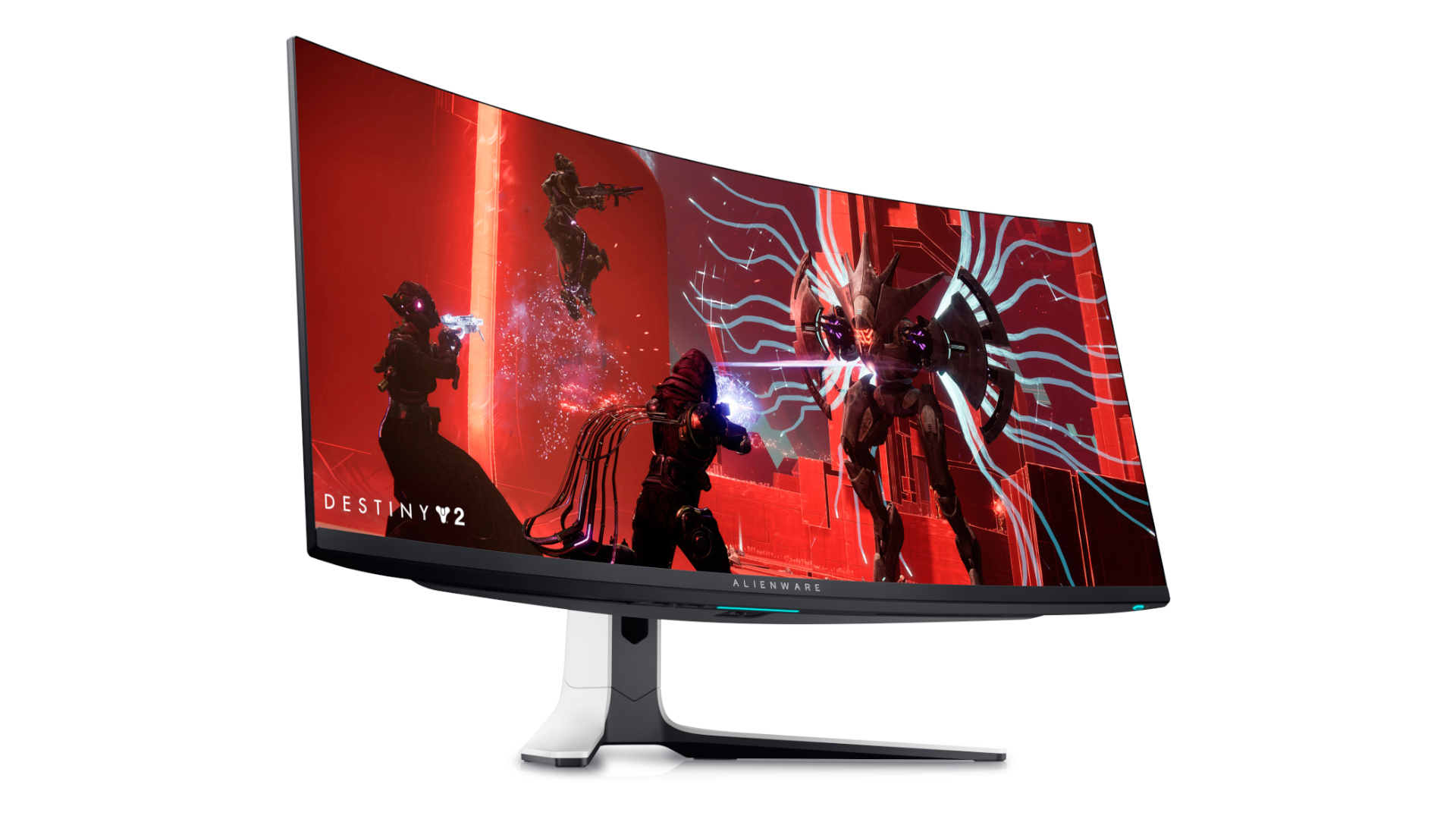The best gaming monitor might offer a 144Hz refresh rate and 1ms response time at 1080p for a great price, or it might boast 4K resolution in an ultrawide format. There isn’t a ‘one size fits all’ when it comes to displays, as it’ll depend on what genre of game you play, how much you’re wanting to spend and the size of the screen itself.
Display technologies have come a long way over the past several years. Modern IPS and VA panels now offer lightning-fast response times and refresh rates alongside wide colour gamut coverage, making TN options basically obsolete. However, emerging and upcoming OLED monitors could become the ideal option provided you can afford them.
To help you narrow down that perfect screen to sit atop your desk, we’ve created a shortlist of the best gaming monitor models out there. Down below you’ll find displays of all prices, sizes, and specs, but all are worthy of a spot in a setup.
Here are our picks for the best gaming monitor:
- MSI Optix MAG274QRF-QD – best monitor for gaming
- AOC 24G2SP – a great value screen for gamers on a budget
- Asus ROG Swift PG259QNR – the ultimate display for esports
- Corsair Xeneon 32UHD144 – 4K resolution gaming at its finest
- Samsung Odyssey G7 – best screen for high frames at 1440p
- Asus TUF Gaming VG259QM – the undisputed 1080p champion
- LG 34GP83A-B – ultrawide 21:9 gaming at its best
- Alienware AW3423DW – best HDR experience
1. Best gaming monitor
The best gaming monitor is the MSI Optix MAG274QRF-QD.
Expect to pay $449.99 USD / £499.99 GBP.
MSI may not be the first company that comes to mind when it comes to discussing the best gaming monitor, but displays like the Optix MAG274QRF-QD prove that they should. While it most certainly isn’t the most memorable of model names, behind its alphabet soup is a screen that is basically a perfect match for most gamers out there.
It boasts a host of desirable specs, including a 1440p resolution paired with a buttery smooth refresh rate of 165Hz. These are elevated by the monitor’s 27-inch Rapid IPS panel, which offers superior contrast ratios to many of its competitors and surprisingly wide colour gamut coverage thanks to the inclusion of quantum dot technology. Suffice to say, the best PC games look wonderfully vibrant and sharp on this display.
However, it’s not just a pretty face, as this monitor is more than capable when it comes to responsiveness. It packs fast response times that are devoid of any noticeable ghosting, with Nvidia G-Sync compatibility helping to stave off any unwanted screen tearing.
Read the PCGamesN MSI Optix MAG274QRF-QD review for our full verdict and score.
Pros:
- Fast response times
- Wide coverage of DCI-P3 and AdobeRGB colour gamuts
Cons:
- Overly saturated colours out of the box
- Poor HDR support
2. Best cheap gaming monitor
The best cheap gaming monitor is the AOC 24G2SP.
Expect to pay $189.99 USD / £199.99 GBP.
If you’re looking for a gaming monitor that offers good value without breaking bank, then look no further than the AOC 24G2SP. Don’t let its low price point fool you, as this display punches well above its weight.
Just because you’re looking to save a buck, doesn’t mean you need to be saddled with lesser-quality screens or paltry refresh rates. AOC knows this and has packed a 1080p IPS panel inside the 24G2SP with a refresh rate of 165Hz.
These specs are perfect for budget gamers, as they don’t require powerful hardware to make the most out of them. If your system struggles to maintain a consistent frame rate, fret not, as AMD FreeSync Premium support will help mitigate stuttering and tearing.
Pros:
- 165Hz refresh rate
- Above average contrast ratio for an IPS
Cons:
- Response times are a touch slow
- Annoying OSD navigation
3. Best high refresh rate monitor
The best high refresh rate monitor is the Asus ROG Swift 360Hz PG259QNR.
Expect to pay $699.99 USD / £699.99 GBP.
When it comes to competitive gaming, the most important spec for a gaming display is undoubtedly refresh rate. While there are plenty of fine options out there, none can compete with the refresh rate offered by the Asus ROG Swift 360Hz PG259QNR.
As its name suggests, it boasts a refresh rate of 360Hz which allows for unmatched input lag and motion clarity, in addition to class-leading response times. As you might expect, it also includes an Nvidia G-Sync module and support for Adaptive Sync.
All of these elements are essential when aiming to play esports games at a professional level, and can be enhanced even further by enabling Nvidia Reflex or AMD Anti-Lag. That said, these benefits aren’t limited to particular genres, and you should expect a markedly smooth and responsive experience regardless of what you play.
Pros:
- 360Hz refresh rate
- Class-leading input lag and motion clarity
Cons:
- Colour gamut coverage is lacking
- Expensive for a 1080p display
4. Best 4K monitor
The best 4K monitor is the Corsair Xeneon 32UHD144.
Expect to pay $999.99 USD / £949.99 GBP.
We expect high levels of performance and great build quality from Corsair products, and the Xeneon 32UHD144 oozes both in spades. Despite being relatively new to the display scene, the company has already crafted our favourite monitor for high-resolution gaming.
Pairing this screen with one of the best graphics cards on the market is a must, in order to properly drive its 4K resolution and make use of its 144Hz refresh rate. This is much easier to achieve than it sounds thanks to upscaling technologies like Nvidia DLSS and AMD FSR, meaning your games can both look and feel fantastic with pin-sharp image quality and smooth gameplay.
The Xeneon 32UHD144 also offers a number of conveniences seldom found on competing options, such as its wonderfully pleasing cable management system and Corsair iCue integration. It also features a built-in multi-mount at the top of its stand, which can be used to seamlessly place your webcam or key light.
Read the PCGamesN Corsair Xeneon 32UHD144 review for our full verdict and score.
Pros:
- High resolution and refresh rate IPS panel
- Produces accurate and vivid colours
Cons:
- Lacks proper local dimming for HDR
- 1ms response time requires Adaptive Sync to be disabled
5. Best 1440p monitor
The best 1440p monitor is the Samsung Odyssey G7.
Expect to pay $699.99 USD / £499.99 GBP.
Should you be plenty comfortable with a 1440p but are looking to enhance your gaming experience further, then the Samsung Odyssey G7 is a compelling option. It’s part of a growing class of high-resolution 240Hz displays, offering a familiar level of image quality with even better responsiveness.
Samsung has tuned the VA panel inside the Odyssey G7 exceptionally well, unlocking the kind of great response times that are more commonly associated with IPS panels. This screen technology comes with its own unique advantages, though, such as deeper black levels and a higher level of contrast for greater immersion.
While we recommend picking up the 27-inch model, you can pick it up in 32-inch screen size if you’d prefer something a bit larger. Just bear in mind that opting for the bigger display will reduce the sharpness slightly.
Read the PCGamesN Samsung Odyssey G7 review for our full verdict and score.
Pros:
- 1440p resolution combined with 240Hz refresh rate
- Great response times
Cons:
- HDMI 2.0 ports are limited to 144Hz
- 1000R curve won’t be for everyone
6. Best 1080p monitor
The best 1080p monitor is the Asus TUF Gaming VG259QM.
Expect to pay $279.99 USD / £239.99 GBP.
Despite there now being plenty of higher resolution displays, 1080p resolution remains the most popular choice among gamers, according to the Steam Hardware & Software Survey. There are plenty of Full HD options available on the market, but we feel the Asus TUF Gaming VG259QM stands tall above its competitors.
With its 280Hz refresh rate, it falls slightly short of the fastest monitors out there, but comes close enough that all but those who demand the speediest of screens should care. It offers a greater balance of image quality and responsiveness too versus its more expensive counterparts, with the ability to produce a wider array of accurate and vivid colours.
It doesn’t break the bank either, offering (frankly) bonkers value, and its 27-inch variant doesn’t cost much more either. That said, we’d recommend sticking with the 24.5-inch version for a higher pixel density, which should help create a sharper overall image.
Pros:
- 280Hz refresh rate
- Doesn’t sacrifice colour quality for its response times
Cons:
- Higher-resolution displays only cost a little more
- Pointless HDR
7. Best ultrawide monitor
The best ultrawide monitor is the LG 34GP83A-B.
Expect to pay $899.99 USD / £899.99 GBP.
Switching to a 21:9 aspect ratio can help provide a more immersive experience, particularly in expansive open-world games like Cyberpunk 2077 and Red Dead Redemption 2. However, these screens can also enhance your productivity, and the LG 34GP83A-B is perfect for both these use cases.
It comes with a subtle 1900R curve so its screen subtly envelops around you, filling more of your peripheral vision in the process. While most ultrawides typically feature VA panels, LG has managed to cram their Nano IPS technology inside this particular monitor, which allows for great colour reproduction.
Combined with a 160Hz refresh rate, providing a smoother experience than many of its competitors that boast lower specs, you’ll be hard-pressed to find a better gaming ultrawide than the 34GP83A-B around its price point.
Pros:
- Nano IPS benefits in an ultrawide form factor
- Higher refresh rate than other similar models
Cons:
- Potential for resolution incompatibility with some games
- Stand is fairly large
8. Best HDR monitor
The best HDR monitor is the Alienware AW3423DW.
Expect to pay $1,299.99 USD / £1,099.99 GBP.
With the advent of OLED display technologies, genuinely great high dynamic range gaming is slowly but surely becoming more of a reality. Now, the Alienware AW3423DW is here to put all the longstanding pretenders on the market to shame.
Armed with a QD-OLED panel, the ultrawide gaming monitor features 1,000 nits peak brightness, and an infinite contrast ratio. All of this contributes to an unrivalled HDR performance, and it’s much cheaper than some of its competitors to boot.
Its 21:9 panel boasts a native resolution of 3440×1440, a whopping 175Hz refresh rate, and a 0.1ms response time that all make for a wonderfully responsive gaming experience.
Read the PCGamesN Alienware AW3423DW review for our full verdict and score.
Pros:
- Per-pixel local dimming makes for a fantastic HDR experience
- Ultrawide 21:9 1440p resolution with a 175Hz refresh rate
Cons:
- Risk of burn-in
- Brightness and contrast suffers in well-lit rooms
| Alienware AW3423DW specs | |
| 34-inches (ultrawide) | |
| 3440 x 1440 | |
| 175Hz | |
| QD-OLED |
Is 60Hz good for gaming?
While 160Hz monitors like the LG 34GP83A-B are top-tier when it comes to helping aid quick reaction times in competitive multiplayer games, a 60Hz panel is still brilliant for gaming, especially if you’re not playing at a professional level. Also, if your GPU is on the older side and struggling to hit higher refresh rates, a 60Hz monitor is a better choice.
Should I use two gaming monitors?
Multi-monitor setups admittedly look a bit like a hacker setup from a cheesy Hollywood action flick, but using more than one display is beneficial. The extra screen will give you somewhere to pop your Discord window while running games, and it’ll come in handy if you work from home.
Of course, using additional monitors fully depends on your graphics card of choice, as you’ll need appropriate display outputs. The extra screens could also make lower-spec GPUs sweat, which in turn can have an effect on in-game performance.
Should I use Nvidia G-Sync?
It’s possible to use G-Sync on many FreeSync monitors, as the underlying technology is fundamentally the same. Here’s our handy video on how to enable Adaptive Sync with an Nvidia GeForce GPU. PCGamesN also has a full guide on how to run AMD’s screen tech with a GeForce GPU.

 1 year ago
282
1 year ago
282
